It has been 14 years since my book 8 Steps to a Pain-Free Back came out in hard copy. For years I had wished I had a book to send to those people who called me from the East Coast or Midwest. These were often relatives or friends of people I had worked with in California, who were suffering terrible back pain and needed help. And so I got writing.
A book to solve back pain
Although there was clearly a huge need for a book to solve back pain, I was still surprised to find I had written a bestseller. It reached number two on Amazon.com following our American Public Television program in 2011, and number three following the New York Times article (paywall) naming me “The Posture Guru of Silicon Valley” in 2013. It has now been published in 12 languages (Croatian later this year), and sold over 250,000 copies.

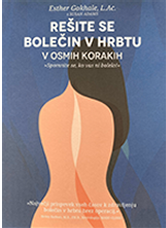
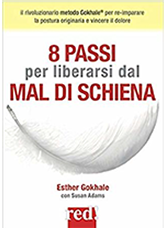
8 Steps to a Pain-Free Back is available in many languages: Spanish, Croatian, English, Polish, Simplified Chinese, Traditional Chinese, German, Korean, Arabic, Russian, Hungarian, Slovenian, and Italian editions.
Digital download or hard copy?
In recent times digital books have revolutionized publishing. It is perhaps surprising that figures from the US publishing industry show that, in 2020, hard copy was still outselling downloads by 2 to 1¹. 8 Steps to a Pain-Free Back is available as a digital download, but the paperback version continues to be in high demand. I have come to realize that there are numerous and perhaps unusual virtues for having a paperback edition of this book, some of which I would like to share to inspire you!
Every digital book has the primary advantages of price and portability, but can remain out of sight and out of mind. Encountering a physical book invites you to engage with it, to pick it up and thumb through it. You don’t have to sign into wifi or wait for it to load—you just start reading.
Visual cues help pattern healthy posture
One factor which works against us developing and maintaining healthy posture in our society is that we don’t have good examples and reminders around us. In fact, we are continually exposed to a norm of bad posture, while our culture’s idea of good posture, the S-shaped spine, is deeply problematic. What we want is to be surrounded by healthy visual examples on which to model ourselves.
8 Steps to a Pain-Free Back has over 1,100 images, mostly photographs, showing healthy posture from all over the world, from history, and in infants. Students find these images a motivating and practical reminder on their posture journey. Many a person has fallen in love with the African carpenter on the frontispiece, who insisted I take his picture, or marveled at the babies stacksitting with ease.

This African carpenter stands tall and relaxed by his bench. This is also excellent form for preparing food in the kitchen, or any work at a counter. 8 Steps to a Pain-Free Back, pg 3.

My youngest child stacksitting next to her “sitting tub.” 8 Steps to a Pain-Free Back, pg 69.
You can of course collect your own posture pinups, and I encourage you to do so. But selecting your favorites from 8 Steps to a Pain-Free Back is convenient, plus you will know the posture shown passes muster. The quality of the prints means that they look completely at home popped into a frame, or even laminated and placed around the garden or garage or in your shower stall (true story about the tallstanding image leading Lesson 6). The key thing is to place them exactly where you need the reminders. For example:
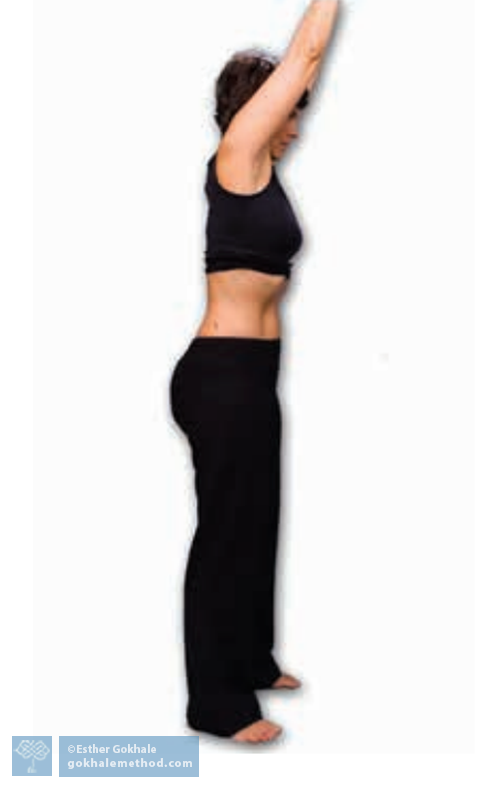
Here I am reaching up to engage my inner corset. Use this reminder near a high shelf or cupboard that you regularly reach up to. 8 Steps to a Pain-Free Back, pg 127.

This African woman is hip-hinging as she harvests water chestnuts—a perfect picture reminder for your vegetable garden. 8 Steps to a Pain-Free Back, pg 151.
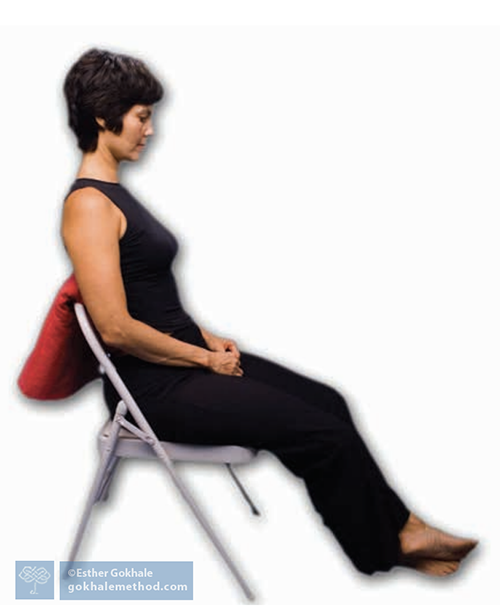
Here I am stretchsitting. Place this reminder by your easy chair or sofa, where you may otherwise tuck and slouch. 8 Steps to a Pain-Free Back, pg 47.
If you are of a technical bent you may be drawn to the many diagrams. Students find the mechanism of a shoulder roll drawing helpful in executing this technique. The shoulder roll helps your shoulder joint to return home to a healthy posterior position.
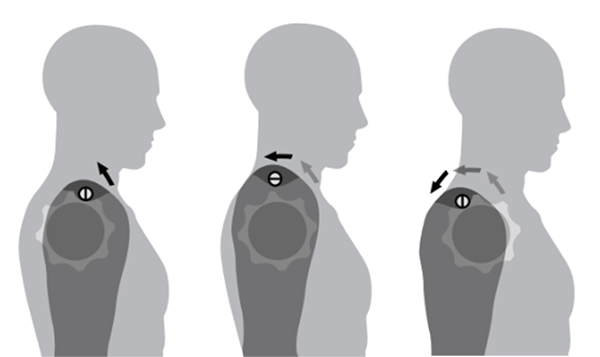
The mechanism of a shoulder roll diagram is especially useful at any desk or computer. 8 Steps to a Pain-Free Back, pg 42.
Lastly, the recaps at the end of each chapter make a handy cheat sheet while you are revising a new technique. For example, the recap of stretchlying on the side may be beneficial pinned onto your bedside table.
Starting a conversation about healthy posture
Your book can take pride of place on the coffee table, where, unlike a download, it will always be there to catch the eye. This is a nice organic way of keeping posture on your radar and introducing it as a talking point with family and visitors. We certainly know of parents who leave 8 Steps to a Pain-Free Back strategically placed for their children to discover!

The coffee table is a great place for browsing a book.
Introducing your wider circle to healthy posture
If you are part of a wellness group, then 8 Steps to a Pain-Free Back is a natural fit for study. If you are a book club member, then this may be the book you are looking for to invite discussion beyond back pain extending into anthropology, history, health, and lifestyle.
Given that 80% of people in the US will experience back pain², not to mention the many other musculoskeletal problems addressed in its pages, this book has broad relevance. Many of our students are grateful to have discovered 8 Steps while visiting their physician or other healthcare professional.
To help you spread the word among your family and social networks we have created “clan packs." The launch price has an additional discount: 4 books for $79 (instead of $99), or 8 books for $119 (instead of $159), and is valid until March 13, 2022.
Sometimes when I speak at conferences or wellness events (e.g., Google, Mimosa Systems, TiE Silicon Valley, Global Fund for Women), the company offers their employees/members/donors a gift copy of my book. To encourage this, we offer special bulk discounts. For information please contact [email protected]. For speaking engagements please contact [email protected].
References:
¹Felix Richter, “Infographic: E-Books Still No Match for Printed Books,” Statista Infographics, August 9, 2021, https://www.statista.com/chart/24709/e-book-and-printed-book-penetration/.
²Janet K. Freburger et al., “The Rising Prevalence of Chronic Low Back Pain,” Arch Intern Med 169, no. 3 (2009): 251-258, doi:10.1001/archinternmed.2008.543
Free Online Workshops
If you would like to find out more about how the Gokhale Method can help support you, sign up to join one of our upcoming FREE Online Workshops.



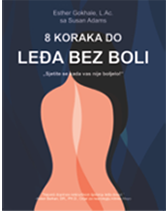
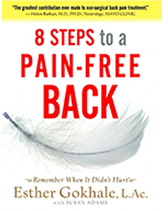
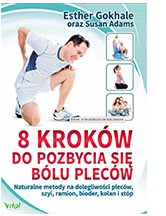
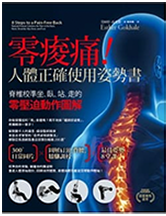

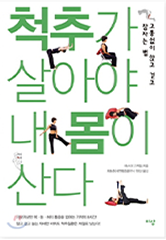

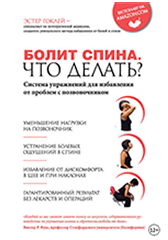
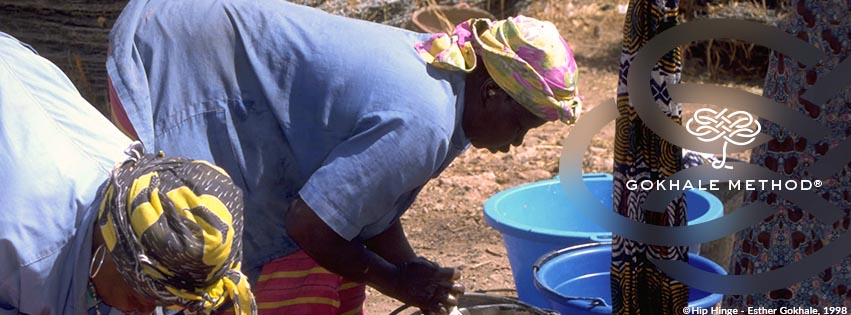
Comments
Wow Esther!14 years, 250.000
Wow Esther!
14 years, 250.000 copies and 12 languages! That's something even better than a bestseller. That's a longseller! A book that will last and has survived the frenzy of novelty and media. A true book.
On a more personal level, this book was the beggining of my posture journey and help me so much to deal with pain in a time I thought there was nothing left to do.
I hope you get the time and energy to keep writing more great books!